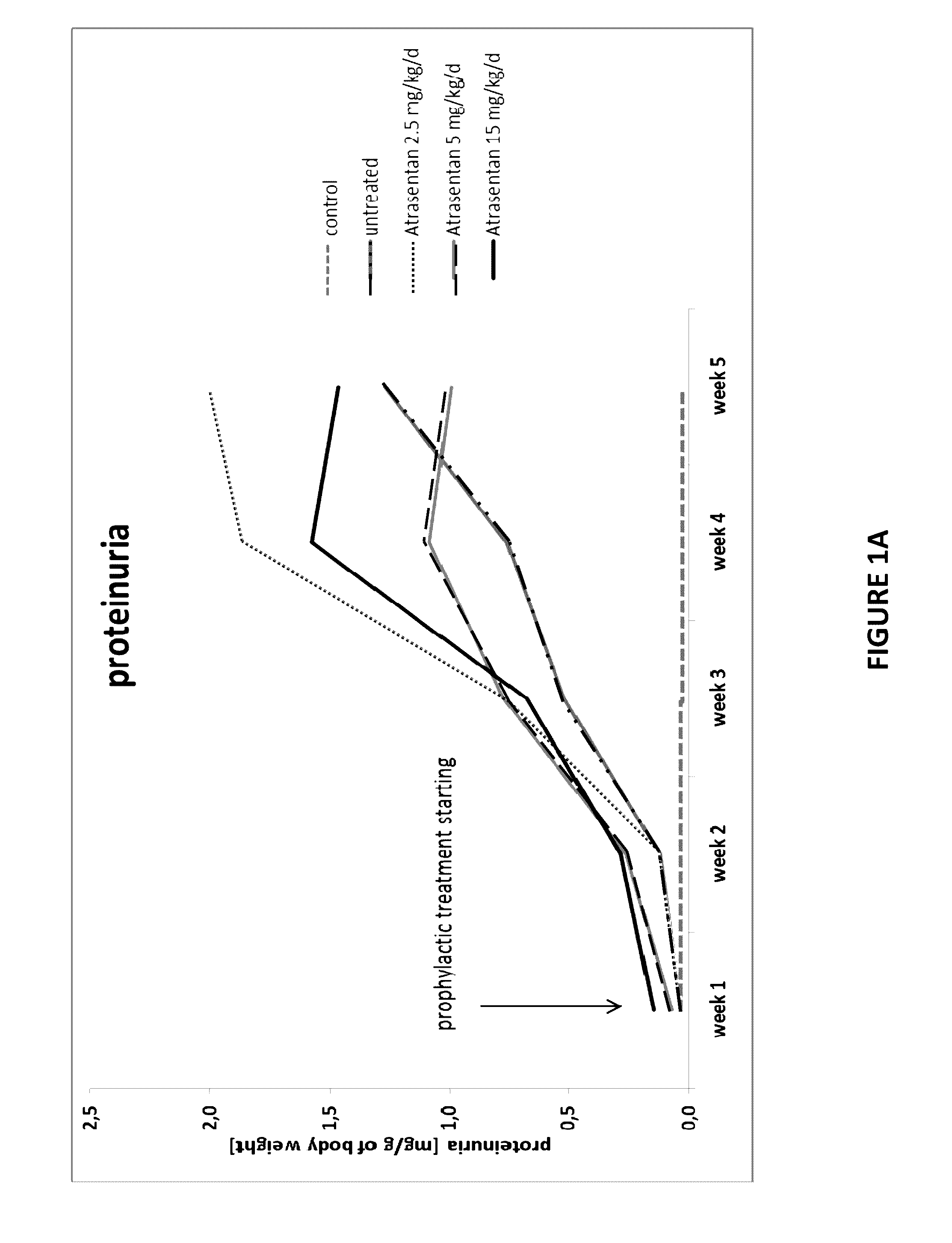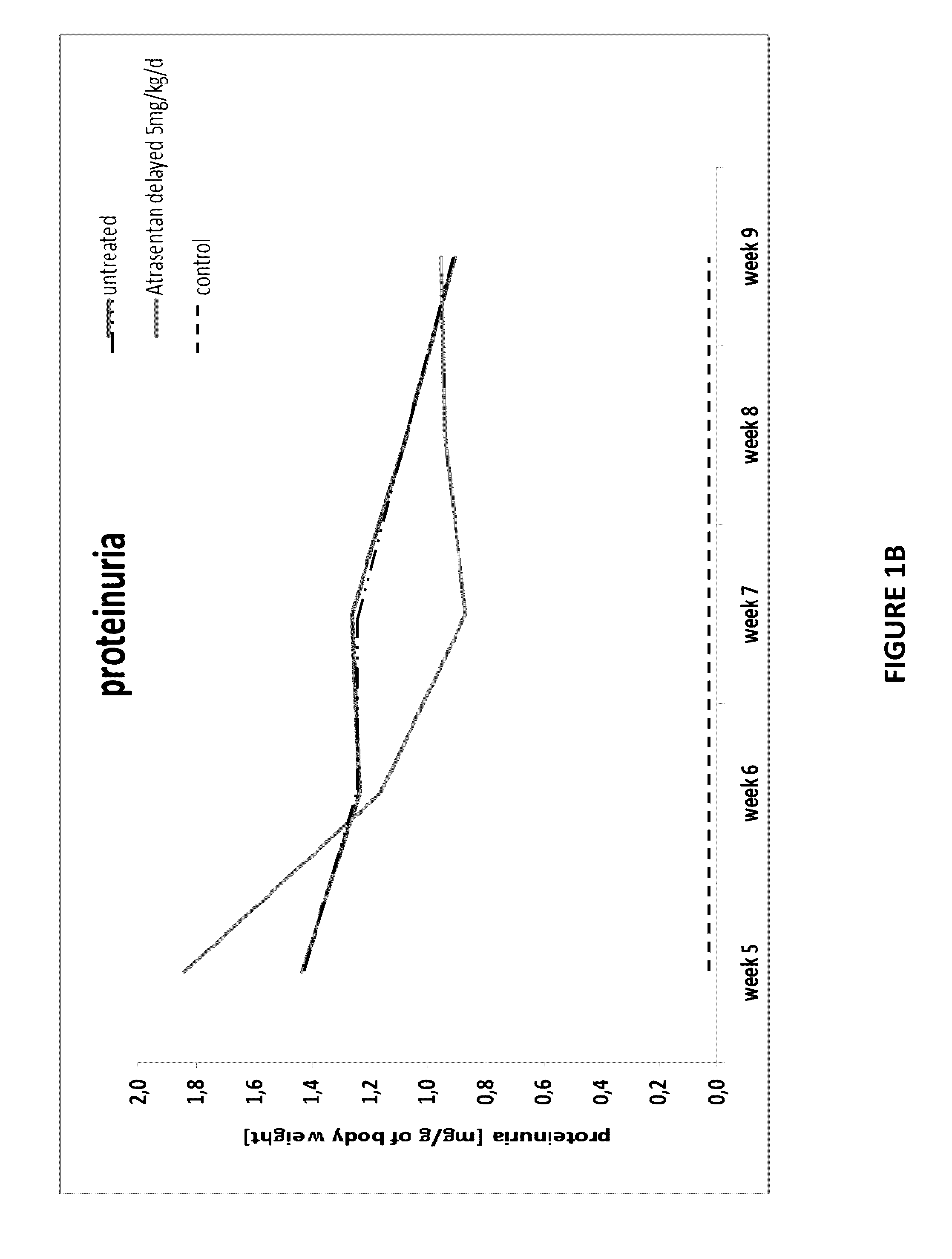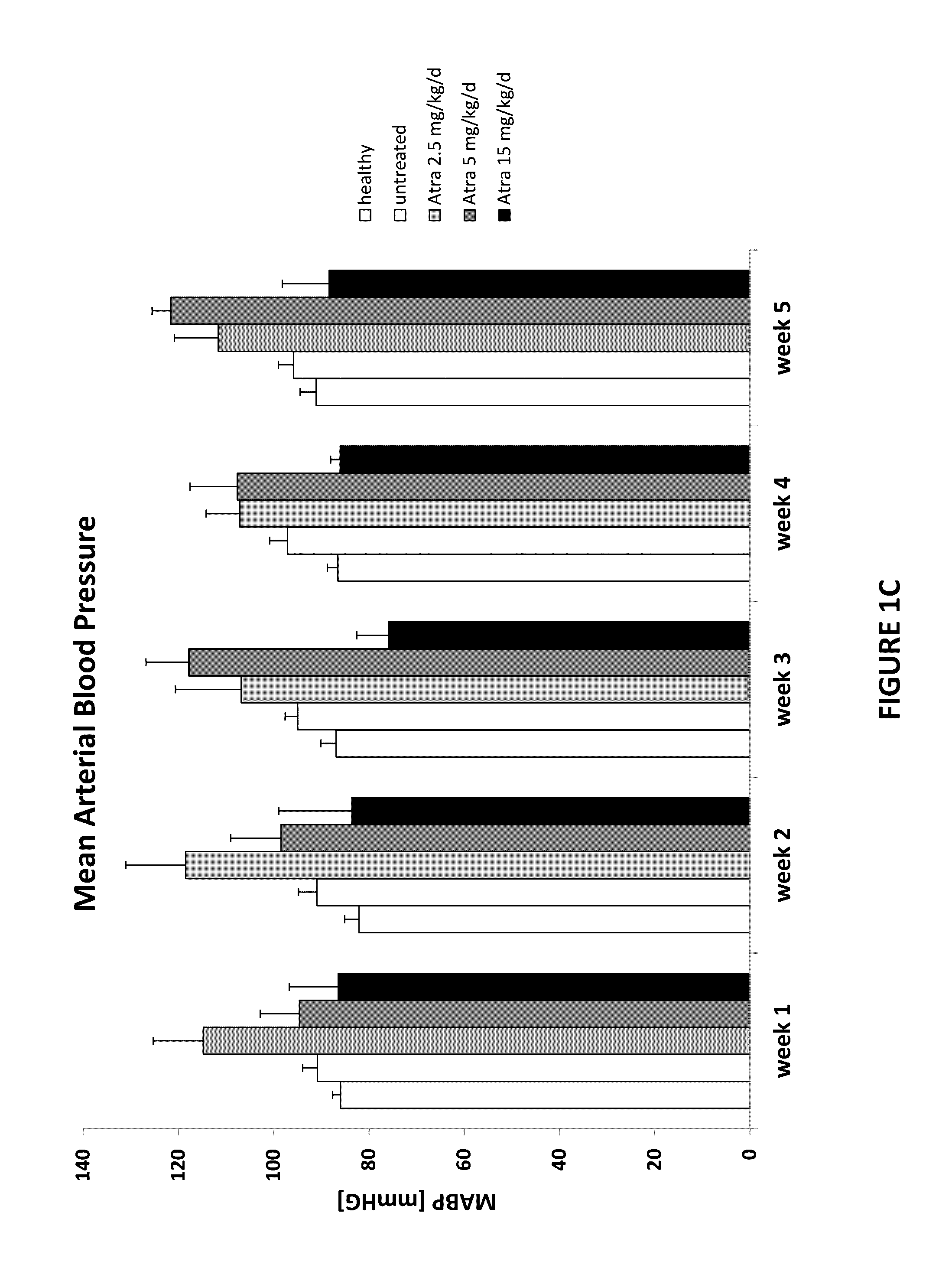Treatment of Multidrug-Resistant Nephrotic Syndrome (MDR-NS) in Children
a multi-drug-resistant nephrotic syndrome and treatment method, applied in the field of children's treatment of multi-drug-resistant nephrotic syndrome (mdrns), can solve the problems of insufficient treatment options and small number of patients with mdr-ns, and achieve the effect of improving or ameliorating the symptoms of mdr-ns
- Summary
- Abstract
- Description
- Claims
- Application Information
AI Technical Summary
Benefits of technology
Problems solved by technology
Method used
Image
Examples
example 1
[0103]We have analyzed results from studies in a transgenic mouse model where the mice were treated with atrasentan. Using the Cre recombinase technology, we generated a novel inducible mouse model of podocin-related nephrotic syndrome. Cross-breeding of animals carrying one foxed podocin construct, one podocin allele with the R140Q mutation, and tamoxifen-sensitive inducible Cre enabled us to induce hemizygosity for the R140Q mutant. In this work, we were able to examine the human missense mutation R138Q of NPHS2 gene identified in pediatric patients with nephrotic syndrome in vivo in an inducible mouse model of R140Q mutation (murine analogue to the human mutation). The induced animals with Nphs2R140Q / − genotype developed proteinuria within the first week after the induction with tamoxifen, which reached its maximum at week 4 and 5. Podocytes injury in our model resulted in progressive renal disease, demonstrating phenotype of nephrotic syndrome in human, such as proteinuria, hype...
example 2
[0119]Using the same mouse model as Example 1, we found that there is a late upregulation of endothelin-1 mRNA expression (FIG. 4) in the course of disease, raising the possibility that Atrasentan is only effective when FSGS is fully established. Therefore, we started the treatment after 4 weeks of disease state (5 mg / kg / d) when animals are showing high proteinuria, performing 4-weeks treatment duration (n=14) and 8 weeks treatment duration (n=4), respectively.
[0120]Proteinuria (FIG. 6), weight gain and blood pressure (FIG. 7) were monitored at least every 2 weeks. All animals were sacrificed at the end of the observation period and biochemical parameters (FIG. 8) as well as histological changes (FIG. 9) were determined consequently. All results were compared to control groups of healthy and sick untreated animals.
[0121]FIG. 6 demonstrates that after drug administration, proteinuria reaches a peak and declines afterwards progressively. FIG. 7 demonstrates that anima...
PUM
| Property | Measurement | Unit |
|---|---|---|
| resistance | aaaaa | aaaaa |
| binding affinity | aaaaa | aaaaa |
| density | aaaaa | aaaaa |
Abstract
Description
Claims
Application Information
 Login to View More
Login to View More - R&D
- Intellectual Property
- Life Sciences
- Materials
- Tech Scout
- Unparalleled Data Quality
- Higher Quality Content
- 60% Fewer Hallucinations
Browse by: Latest US Patents, China's latest patents, Technical Efficacy Thesaurus, Application Domain, Technology Topic, Popular Technical Reports.
© 2025 PatSnap. All rights reserved.Legal|Privacy policy|Modern Slavery Act Transparency Statement|Sitemap|About US| Contact US: help@patsnap.com



